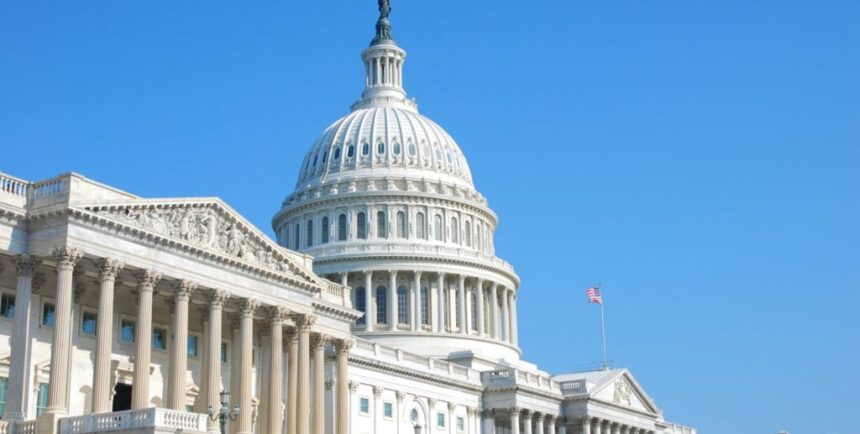Earlier this month, Democratic lawmakers introduced a new bill designed to disincentivize investors from buying up single-family homes. The bill, known as the Stop Predatory Investing Act, would eliminate interest and depreciation deductions for investors who acquire 50 or more new single-family rental homes after the bill is enacted.
The bill allows a couple of exceptions—investors would still be permitted to take deductions on homes built to rent or financed using Low-Income Housing Tax Credits. And those who elect to sell a property to a homeowner or qualified nonprofit would be permitted to take deductions for the year of the sale.
The bill is aimed at increasing housing access and affordability, particularly for first-time homebuyers purchasing starter homes. Proponents of the bill allege that corporate investors outbid families for homes and rent those homes at increasingly high prices, creating too much competition for would-be homeowners amid a housing shortage.
But high mortgage rates and forecasts of falling prices are already causing investors to pull back from purchasing single-family homes. Investor purchases of single-family homes dropped nearly 50% year over year in the fourth quarter of 2022, according to Redfin data.
Further, it’s not clear whether investors caused overinflated home prices or merely reacted to the conditions that created the housing boom. The bill may not improve housing affordability as supporters hope, and it could have unintended consequences.
Are Investors Responsible for Driving Up Home Prices?
While difficult to determine the extent, it’s clear that large investors did have a presence in the single-family market during the homebuying boom. But whether they caused prices to spike is up for debate.
Data from CoreLogic indicates a jump in the share of investor single-family home purchases from 16% between 2017 and 2019 to 28% in the first quarter of 2022, according to a report from the Joint Center for Housing Studies of Harvard University. Investors were especially aggressive in pandemic boomtowns that are now at risk for falling prices—for example, they accounted for 41% of home sales in Atlanta and 36% of home sales in Phoenix in the fourth quarter of 2021. The researchers note that large investors (those with at least 100 properties) were responsible for most of the growth and contributed to a reduction in supply for potential owner-occupants.
Data from Freddie Mac shows a much smaller increase in investor purchases as a share of all home sales, from 26.7% in 2019 to 27.6% in December 2021, mostly driven by large institutional investors. But the report notes that investors typically went for under-market-value homes that needed more repairs than owner-occupants would be willing to take on.
In addition, though corporate investors accounted for about 4% of home purchases, iBuyers flipped many of these homes and returned them to the market, so a portion of those purchases had a neutral effect on supply. “Although investors are certainly contributing to the affordable housing shortage, they are not the driver of the tight supply of homes available for purchase,” the report states.
Instead, analysts at Freddie Mac assert that the increase in housing prices can be attributed to underbuilding, which limited supply, as well as low mortgage rates in 2020 and 2021, migration away from expensive cities, and more people than ever reaching the age for first-time homebuying, all of which ramped up demand.
Other experts echo the idea that corporate investors are not to blame for high home prices. “The growth of institutional investors is a symptom, rather than the cause, of extremely tight housing markets,” said Jenny Schuetz, an economist at The Brookings Institute, at a U.S. House Committee on Financial Services hearing. She also noted that zoning ordinances that create challenges for builders are contributing to the undersupply of homes and that “single-family rentals are an important part of the housing ecosystem.”
Would the Bill Be Effective?
“Our bill will help prevent corporate landlords from driving up local housing prices, and put power back in the hands of working families, who need a safe, affordable place to live and raise their children,” said Sen. Sherrod Brown (D-Ohio) in a statement. But would the bill have that effect?
Corporate investors are often depicted as greed-driven entities that reap profits at the expense of working families. If that’s the case, would eliminating a tax break prevent these companies from purchasing single-family homes? Or would they merely pass on the added expense to renters? And even if the bill were effective in getting investors to pull back, would it have any meaningful effect on housing affordability?
A study on the effects of a ban on investors buying rental homes in the Netherlands indicates that the measure led to gentrification and rising rent prices without impacting home sales or housing prices. Dutch researchers with the University of Amsterdam and Erasmus School of Economics noted that while the law made homes more accessible for middle-income people, the policy ultimately had a negative impact on housing affordability and neighborhood diversity.
While this study alone certainly isn’t proof of what would happen if the Stop Predatory Investing Act were to go into effect, the research is helpful when assessing the potential effect of curbing institutional investment in housing.
When evaluating this bill, it’s also important to consider housing affordability for both prospective homebuyers and renters. Whether or not corporate investors contributed to affordability problems for buyers, they are contributing to the supply of rental homes. “…to the extent institutional investors’ activities are likely to result in smaller inventories of [single-family] units available for purchase, they also result in increasing the overall supply of available [single-family] rentals,” notes a report from the Congressional Research Service. The report also states that these investors are capable of completing renovations that may be out of reach for low-to moderate-income homebuyers.
The National Association of Realtors (NAR) Housing Affordability Index sits below 100 as of March 2023, which indicates the average family can’t afford to buy a home based on median prices. Prospective homebuyers who might be able to afford a mortgage payment if interest rates were lower are now forced to rent instead of buying. Corporate investors may be taking advantage of that reality, but they’re also providing people with places to live.
That said, restricting depreciation deductions for investors who own 50 or more single-family homes might make room for more mom-and-pop investors to provide rental homes. That shift is already underway—small investors with 10 properties or fewer are buying an increasing share of homes, while large investor home purchases decline. It’s possible the proposed bill could help the trend along, which may be a win for renters and small investors.
In an NAR survey, 60% of Realtors observed increasing acquisitions of mom-and-pop rental businesses in 2021, and 52% reported that properties owned by institutional investors had higher rent prices than mom-and-pop rentals. The Congressional Research Service notes that it’s unclear whether institutional investors charge excessive rents, but one study did find that rents go up after institutional mergers in neighborhoods where both firms had owned properties. A lack of competition within a neighborhood due to the presence of a large investor could be a problem for renters.
Is the Bill a Good Solution?
The proposed Stop Predatory Investing Act is an attempt to chip away at a problem much larger than the increasing share of investors in the single-family market. It may not be a complete solution to the undersupply of starter homes, but is it worth a shot?
Some may argue that the proposed bill doesn’t really hurt anyone. If you believe taxing the wealthy is a solution to correcting wealth inequality, the proposed policy fits that strategy by limiting tax breaks for mega-investors. And due to the 50-property minimum, it doesn’t negatively impact small landlords in the process, unlike the proposed elimination of 1031 exchanges we reported on in March.
Then again, large corporations also create more jobs. And an investor owning 50 rental homes is hardly a monopoly that poses a threat to innovation. Some may argue it’s better for the economy to let these investment firms flourish.
So, is limiting the growth of large real estate investors the best solution to the housing affordability crisis? Think tanks like the Bipartisan Policy Center and the Center on Budget and Policy Priorities each note that a multipronged approach is necessary, but their policy suggestions focus on reforming zoning regulations and improving affordable housing programs rather than curbing institutional investment.
Still, the Stop Predatory Investing Act has support from organizations such as the National Housing Law Project and the National Association of Local Housing Finance Agencies.
The Bottom Line
At its best outcome, the Stop Predatory Investing Act may suppress investment in single-family homes from large investors and leave room for mom-and-pop investors in the market without reducing the supply of single-family rental homes. At its worst, the bill could negatively impact housing affordability and access to single-family rental homes for working families.
There’s also the possibility that the bill won’t have any effect on the share of large investors purchasing single-family homes. And the problem may already be correcting itself as large investors retreat from the market.
In any event, this is only one piece of the puzzle. Lawmakers need to address supply constraints—in particular, restrictive zoning laws—as well as barriers to homeownership in order to meaningfully impact affordability for prospective homebuyers.
Find an Agent in Minutes
Match with an investor-friendly agent who can help you find, analyze, and close your next deal.
Note By BiggerPockets: These are opinions written by the author and do not necessarily represent the opinions of BiggerPockets.









